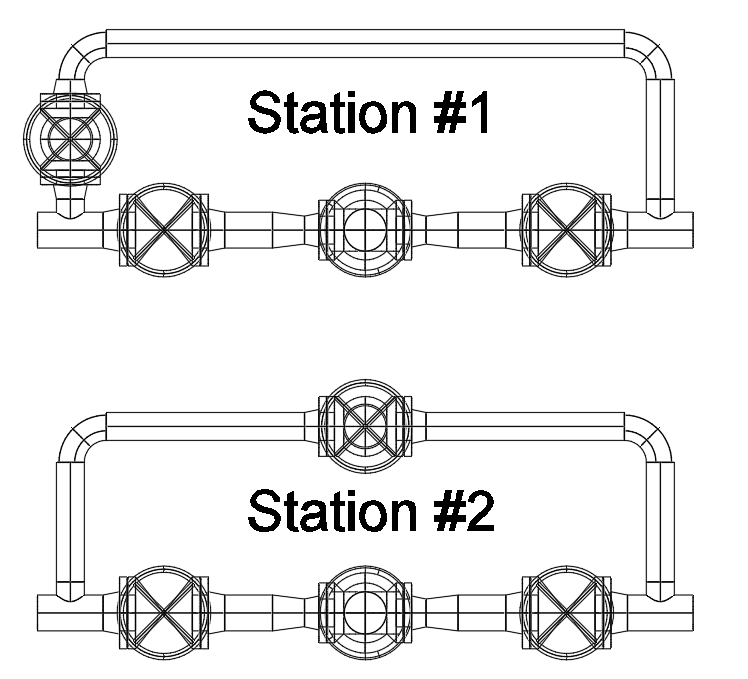DGrayPPD
Mechanical
- Feb 2, 2017
- 300
Good morning everyone,
Just had a quick question. It is pretty basic, but I would still like the opinions of some of the experts on here.
Please refer to the image below. I have given two examples of a control valve station from a plan view. Station #1 would seem to allow easier access to the bypass handwheel and it reduces cuts and welds which saves $$$. Station #2 however shows a more balanced, even arrangement between the bypass and control valve.
My question is, which do you feel is the more ideal arrangement? Is there a benefit to having the bypass even with the control valve in Station #2? If so, what is it? I know what my opinion is, but it is always nice to have validation or for someone to give you legitimate reasons why you may be wrong.
Thanks for the tips.

Just had a quick question. It is pretty basic, but I would still like the opinions of some of the experts on here.
Please refer to the image below. I have given two examples of a control valve station from a plan view. Station #1 would seem to allow easier access to the bypass handwheel and it reduces cuts and welds which saves $$$. Station #2 however shows a more balanced, even arrangement between the bypass and control valve.
My question is, which do you feel is the more ideal arrangement? Is there a benefit to having the bypass even with the control valve in Station #2? If so, what is it? I know what my opinion is, but it is always nice to have validation or for someone to give you legitimate reasons why you may be wrong.
Thanks for the tips.

